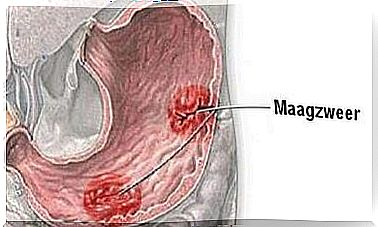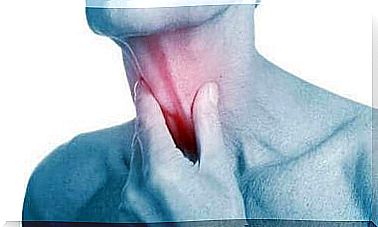Four Types Of Headaches And Their Treatment

In this article, we will talk about four types of headaches and their respective treatments. The treatment of each of these types of headaches depends on their specific characteristics and on your habits.
Therefore, it will help you to know the differences between the types of headaches. It’s also good to understand what we mean by “severe headaches” and how best to treat them. Keep reading so you can learn more.
Four types of headaches and their treatment
1. Migraines

Migraines are the first of the types of headaches that we will talk about. Often people who suffer from it have the feeling that they can no longer function. Therefore, this type of headache is difficult to deal with.
Believe it or not, migraines can be hereditary. That means if it bothers you, it’s very likely that someone else in your family has it too.
This is the most common type of headache, followed by tension headaches. Migraines have the following characteristics:
- Often you will feel the pain only in part of the front of the head (right or left) and it can last up to three days.
- The pain often appears as a throbbing pain. After that, the pain may increase if you move in certain ways. For example, it may increase when you bend over or stand up after sitting.
- Many people experience extreme sensitivity to light or sounds. Therefore, resting in the dark and in silence will help you feel better.
- You may also feel nauseous if you don’t treat it.
Migraines can arise as a result of menstruation, stressful situations, certain foods, the use of certain drugs or medications, or changes in the weather.
There is no cure for migraines. In certain cases it is possible to reduce its frequency. Exercise and stress management, for example, can help with this, as can certain medications.
2. Tension Headache
The second type is also known as “primary” headache. Unlike migraines, tension headaches usually appear in the back of the head or forehead. In general, it is not very intense, and you will not experience any nausea or vomiting.
This is not as debilitating as migraines. In general, people with this type of headache can normally go about their day. Sometimes people can even just exercise. However, tension headaches are much more common and can last from one to seven days.
Often, taking too many over-the-counter medications causes tension headaches. Stress, caffeine withdrawal, and teeth grinding can also lead to these problems. Often ibuprofen helps to reduce the pain.
3. Chronic Headache

Like the headaches we discussed above, this is one of the types of headaches normally caused by taking too many over-the-counter medications.
The only difference from the previous headache is that it is present almost every day. People with chronic headaches usually have this pain on average 15 days a month.
To avoid this, we recommend not taking too much medication or at the very least talking to your doctor to assess which of the medications you are taking are really needed.
4. The Four Types of Headaches: Cluster Headaches
The last of our types of headaches is cluster headaches. While this form has some of the same symptoms as migraines, it also has some other symptoms:
- excruciating pain, often around your eye and on the side of your head
- stuffy nose, and an occasional runny nose on the side of your head that hurts
- the eyelid droops and swells around the affected eye
- pale skin or redness
Cluster headaches usually only last a few minutes, but you can have multiple episodes in the same day. Normally, this headache appears at night and at the same times. Often outbreaks of cluster headaches can last for several weeks.
As with the previous types of headache, you may want to consider applying treatments to control these outbreaks. However, sometimes you can treat them with just ibuprofen or acetaminophen.
Do you have symptoms of any of the headaches we’ve described in this article? Have you ever been diagnosed with migraines or any of the other types of headaches?
Now that you know there are different types of headaches, you can better identify them. Remember: you should only follow treatments prescribed by a doctor.









